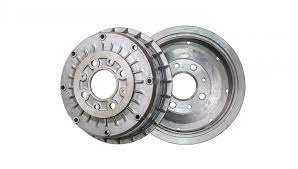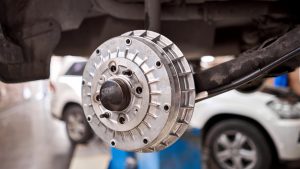Car brakes are essential components for safety, and while disc brakes are common on modern vehicles, brake drums remain a critical part of many rear braking systems. Understanding how brake drums work, their components, maintenance, and advantages will help car owners and enthusiasts keep their vehicles safe and perform at their best. In this guide, we explore the mechanics, types, maintenance tips, and practical considerations for brake drums.
What is a Brake Drum?

A brake drum is a cylindrical component attached to the vehicle’s wheel hub. Unlike disc brakes, which use calipers to squeeze a disc, drum brakes rely on brake shoes pressing outward against the inner surface of a rotating drum to create friction, slowing down or stopping the wheel.
Key Functions:
-
Convert kinetic energy into heat through friction.
-
Provide braking force to slow down or stop the vehicle.
-
Serve as a housing for brake shoes, springs, and other hardware.
Components of a Brake Drum System
A typical drum brake assembly includes several critical components:
| Component | Function |
|---|---|
| Brake Drum | Rotates with the wheel; friction surface for braking. |
| Brake Shoes | Curved friction pads that press against the drum to slow the wheel. |
| Wheel Cylinder | Hydraulic cylinder that pushes brake shoes outward. |
| Return Springs | Pull brake shoes back when the brake pedal is released. |
| Adjuster Mechanism | Maintains proper shoe-to-drum clearance as shoes wear. |
| Backing Plate | Holds all components in place and provides structural support. |
How Brake Drums Work
The braking process in a drum system can be broken down into the following steps:
-
Pressing the Brake Pedal: When you press the brake pedal, hydraulic fluid is forced through the brake lines to the wheel cylinder.
-
Wheel Cylinder Activation: The wheel cylinder pushes the brake shoes outward against the inner drum surface.
-
Friction Generation: The brake shoes’ friction material grips the rotating drum, converting kinetic energy into heat.
-
Vehicle Slows Down: Friction slows the drum, and consequently the wheel, bringing the vehicle to a stop.
-
Release: Releasing the brake pedal allows return springs to pull the brake shoes back, disengaging the friction and letting the wheel rotate freely.
Types of Brake Drums
Brake drums can vary in design and material depending on the vehicle type and performance requirements:
| Drum Type | Characteristics | Advantages |
|---|---|---|
| Standard Steel Drum | Common in most passenger vehicles, made from cast iron or steel. | Durable, cost-effective. |
| Lightweight Aluminum Drum | Aluminum body with cast iron friction surface. | Reduced unsprung weight, better heat dissipation. |
| Ventilated Drum | Drums with cooling channels or fins inside. | Better heat dissipation, reduced brake fade. |
Advantages of Drum Brakes
Despite being older technology compared to disc brakes, drum brakes still offer certain benefits:
-
Cost-Effective: Cheaper to manufacture and replace.
-
High Durability: Well-suited for rear brakes and vehicles with moderate braking demands.
-
Strong Braking Force: Can provide more braking torque per unit area than disc brakes, ideal for heavy loads.
-
Integrated Parking Brake: Easier to implement a mechanical parking brake in drum systems.
Common Brake Drum Problems
Brake drums are subject to wear and tear, and recognizing issues early can prevent accidents.
Signs of Drum Problems:
-
Vibrations or pulsations when braking
-
Squealing or grinding noises
-
Reduced braking efficiency
-
Visible grooves, cracks, or scoring inside the drum
Common Causes:
-
Worn brake shoes
-
Contaminated brake fluid or oil leaks
-
Overheating from heavy braking or high-speed driving
-
Improper installation or adjustment
Maintaining Brake Drums
Proper maintenance ensures optimal braking performance and longevity.
Maintenance Tips:
-
Inspect drums regularly for wear, cracks, or scoring.
-
Measure drum diameter; replace if exceeding manufacturer specifications.
-
Replace brake shoes in pairs to maintain balanced braking.
-
Ensure wheel cylinders and springs are functioning correctly.
-
Clean dust and debris to prevent friction loss.
Replacement Considerations

When replacing brake drums, it’s important to consider:
-
Material: Cast iron for standard use, aluminum for lightweight applications.
-
Fit: Ensure the drum matches OEM specifications for diameter, offset, and hub compatibility.
-
Heat Resistance: High-performance vehicles may need ventilated drums to handle heat.
For high-quality options, you can buy Brake Drum online to ensure proper fit and performance for your vehicle.
Drum Brakes vs. Disc Brakes
| Feature | Drum Brake | Disc Brake |
|---|---|---|
| Braking Performance | Adequate for rear braking | Superior, especially under heavy use |
| Heat Dissipation | Slower, can lead to brake fade | Faster cooling, less fade |
| Maintenance | More complex, many components | Easier to inspect and replace |
| Cost | Lower | Higher |
| Parking Brake | Easily integrated | Usually separate mechanism |
Conclusion
Brake drums remain a reliable and cost-effective braking solution for many vehicles, especially in rear brake applications. Understanding how they work, identifying potential problems, and performing timely maintenance can significantly enhance vehicle safety and longevity.
Whether you’re maintaining an older vehicle or upgrading your braking system, choosing the right brake drum is critical for performance and reliability. Explore high-quality replacement options and buy Brake Drum online to ensure your vehicle stops safely every time.